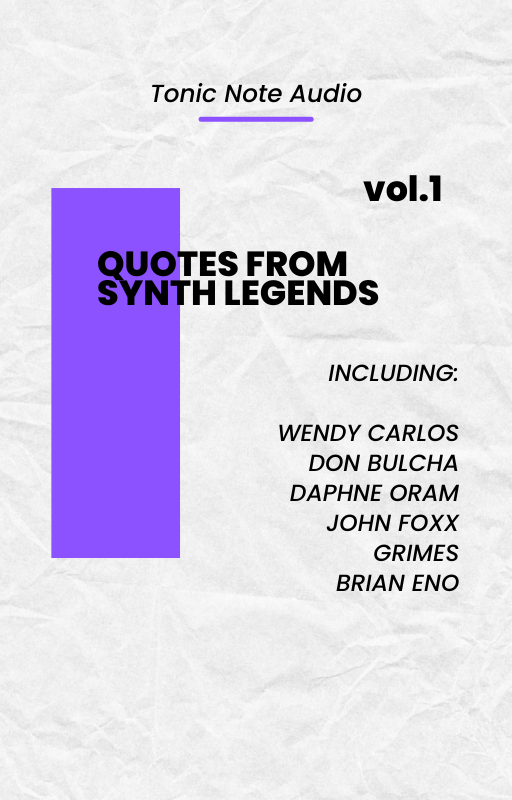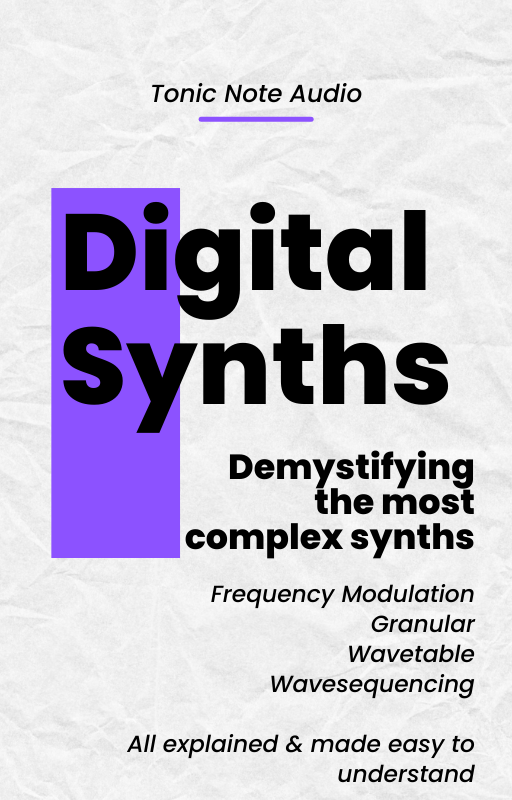Field Recordings in Your Music Production
There are loads of good reasons to add field recordings in your music production! In this free training video, I detail 7 of my favourite field recording tips.
If you scroll past the video, I’ve also written a mini blog that has more tips on sounds to look out for.
One main thing to remember you don’t have to have a fancy field recorder device to do this - you can use the recorder in your smart phone, or buy a cheap dictaphone off eBay to get yourself going!
Also, remember we have our FREE Launch Party on June 10th, at Institute Studios, Margate, with loads of interactive activities, check it out with the button below
Register below to get your FREE “Guide to Synths” eBook
I hope you enjoyed the above video about adding field recordings to your music.
The main benefit of doing this is to add unique sounds to your music, that only you have. This will also make your music more personal and tell your story, because it is you who has got these sounds from your environment.
One problem with field recordings can be wind noise. The worst of the rumble you get from wind (and passing lorries etc) lies in the low frequency range. So if you use EQ to cut away the lower frequencies below 150Hz approx, that should help reduce the negative impact of the sounds you don’t want in your mix.
If you have already started working on a track, It’s good to listen out for sounds that match the vibe of the music you’ve started. Usually a more industrial track will suit urban and machinery sounds. But if you’ve started an ambient piece, possibly sounds from nature and the seaside would suit it better.
Some producers actually start with capturing the field recording, and then use that as inspiration for the entire track. For example, as well as capturing ambient sounds, you can deliberately clang or whack or drop things to make sounds that you can then put into a sampler to create percussive sounds from.
Personally, I love a combination of these methods combined with other music production techniques. However, it is possible to make an entire track only using found sounds, and this is a challenge I want to set myself!
My own project, Last of the Free, heavily relies on samples and sounds from archive Scottish recordings (which I mostly got from YouTube!). However, for the next two EPs, my plan is to take a trip around the Highlands, recording many sounds along the way.
This will include interviews with family, friends and people in the community. Aphex Twin and Boards of Canada have recorded their families to add a personal touch to their music. They have warped the audio so much you might not recognise it, but because the sounds are in there, it adds a very personal touch to their music.
I’d like to try this out as well as adding full clips of poems, speeches, and interviews. A lot of the music has been started already, but I am going to let the field recordings inform the process for the other tracks too.
One main tip I want to leave you with is to do with organising your sounds…. Very quickly you can get overwhelmed with hundreds of recordings and not use any of them! Here are 2 quick strategies to combat this.
Rather than record everything cool you hear, if you are purposeful when you set out to record, chances are you might record less, but the stuff you capture will be more appropriate and useful for your project.
Also, if you quickly say what it is and where you are recording into the recorder, at the start of the recording, you can use this snippet to quickly skim through your files and immediately know what it is, rather than trying to listen hard and unravel the mystery of what sound is that again?
I hope this video and blog has helped you get inspired to use some more field recordings in your music!



